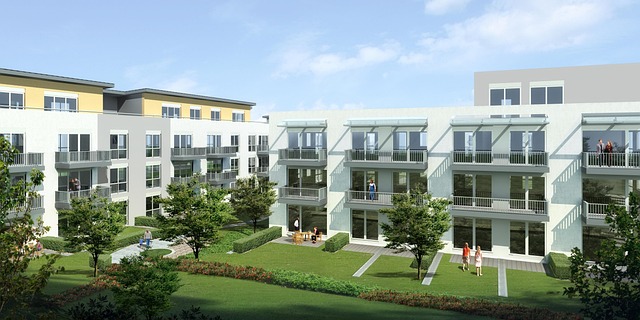CAD-based 3D rendering is a crucial tool for urban development and architectural design, enabling planners to create precise digital models that replicate the physical world. This technology aids in early project feasibility assessments, issue identification, and informed decision-making through realistic visualizations. It facilitates collaboration among stakeholders, leading to improved communication and alignment with expectations. Integrating 3D rendering into landscape and urban planning offers significant advantages, enhancing project management, spatial understanding, aesthetics, and sustainability, as seen in notable global projects like Manhattan's Central Park renovation and Asian metropolis master plans.
In the realm of landscape and urban planning, visualizing large-scale projects is paramount for successful implementation. This article explores the transformative power of CAD-based 3D rendering as a game-changer in bringing ambitious development initiatives to life. We delve into the benefits of 3D modeling, from enhanced design precision to stakeholder engagement. Understanding key aspects and studying real-world case studies will equip professionals with the tools to navigate complex projects effectively.
Understanding CAD-based 3D Rendering for Large-Scale Projects
In the realm of large-scale projects, be it urban development or architectural marvels, Computer-Aided Design (CAD)-based 3D rendering has emerged as a pivotal tool for landscape and urban planning. This cutting-edge technology allows designers and architects to visualize and communicate their visions with unprecedented precision and realism. By creating digital models that replicate the physical world, CAD software enables stakeholders to explore and assess project feasibility, identify potential issues early in the design phase, and make informed decisions.
The power of CAD-based 3D rendering lies in its ability to transform complex ideas into tangible, three-dimensional representations. This process involves intricate modeling, texturing, and lighting techniques to craft photorealistic images or animations that closely mimic reality. Such immersive visualizations facilitate effective communication with clients, investors, and regulatory bodies, fostering collaboration and ensuring projects meet expectations from the outset.
Benefits of Using 3D Modeling in Landscape and Urban Planning
The integration of 3D modeling into landscape and urban planning offers a multitude of advantages, transforming how we envision and develop our built environments. By adopting CAD-based 3D rendering techniques, planners and designers can create detailed digital representations of proposed projects before breaking ground. This allows for more informed decision-making, as stakeholders can visually assess the scale, aesthetics, and potential impacts of designs. With 3D modeling, complex landscapes and urban structures can be easily manipulated and modified, enabling efficient planning and cost-saving measures.
Moreover, 3D rendering provides a powerful tool for communication and stakeholder engagement. Interactive models can be shared with the public, developers, and local communities, fostering transparency and early feedback. This collaborative process helps identify potential issues or concerns early on, ensuring smoother project implementation. The ability to visualize future developments in a three-dimensional context enhances overall project management, facilitates better spatial understanding, and promotes more sustainable and aesthetically pleasing urban designs.
Key Aspects of Effective 3D Modeling for Major Development Initiatives
In the realm of large-scale development projects, effective 3D modeling is pivotal for successful landscape and urban planning. CAD-based 3D rendering serves as a powerful tool, enabling stakeholders to visualize and assess designs before construction commences. This technology allows for precise representation of architectural structures, infrastructure, and surrounding landscapes, fostering informed decision-making. By creating detailed digital models, planners can identify potential issues early on, optimize space utilization, and enhance overall project aesthetics.
Key aspects of successful 3D modeling include accurate data collection, meticulous design documentation, and seamless integration of various project components. High-resolution imagery, laser scanning, and GPS data play a crucial role in generating realistic models. Furthermore, collaboration between architects, engineers, and urban planners is essential to ensure the model aligns with functional requirements, regulatory standards, and aesthetic visions. This interdisciplinary approach streamlines the planning process, leading to more efficient project execution.
Case Studies: Successful Implementation of 3D Modeling in Large-Scale Projects
The successful integration of CAD-based 3D rendering in landscape and urban planning has been evident in numerous large-scale projects worldwide. One notable example is the transformation of Manhattan’s Central Park, where advanced 3D modeling techniques were employed to envision and design new amenities while preserving the park’s historic core. This allowed stakeholders to make informed decisions, ensuring the project aligned with both environmental and community expectations.
Another compelling case study involves the master planning of a sprawling metropolis in Asia, where 3D models played a pivotal role in communicating complex designs to various stakeholders, from city planners to residents. The detailed visualizations facilitated more transparent and collaborative decision-making processes, ultimately leading to a more sustainable and aesthetically pleasing urban landscape. These successful implementations underscore the transformative potential of CAD-based 3D rendering in shaping our built environments.
CAD-based 3D rendering is transforming landscape and urban planning, offering a powerful tool for visualizing and refining large-scale projects. By leveraging 3D modeling, professionals can significantly enhance decision-making processes, improve communication with stakeholders, and ensure more successful outcomes. As demonstrated in the included case studies, embracing this technology allows for precise planning, better resource allocation, and ultimately, the creation of vibrant urban spaces that meet the needs of communities.
